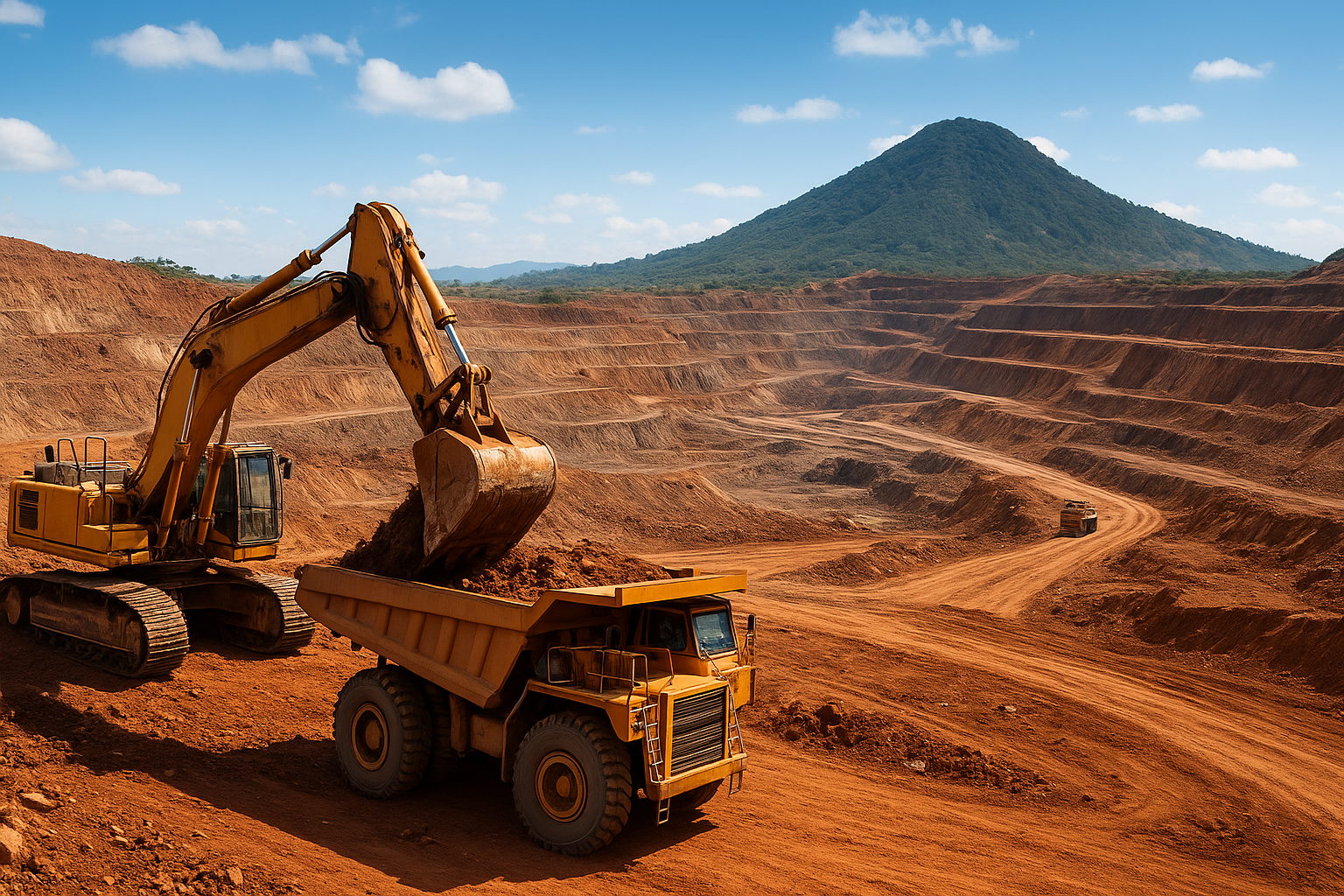Africa’s mining industry is entering a new phase of expansion, underpinned by its dominant role in global mineral production and reinforced by targeted policy reforms. The continent’s resource wealth remains unparalleled — led by platinum group metals (PGMs), chromium, cobalt, bauxite, and gold — positioning Africa as a central player in meeting global demand for critical minerals essential to clean energy and industrial development.
Platinum continues to define Africa’s mining profile, with the region contributing over four-fifths of global output in 2024. Although production is expected to dip slightly in 2025 due to weather disruptions and operational restructuring, long-term growth remains stable. By 2030, the industry is forecast to expand modestly, supported by ongoing investments and new project pipelines in South Africa and Zimbabwe. South Africa remains the anchor of the platinum sector, producing nearly nine-tenths of regional output, while Zimbabwe is preparing for renewed expansion through projects such as Mupan and Karo Platinum.
Beyond PGMs, South Africa maintains its status as the continent’s mining leader, also dominating the global chromium market. Government-led measures to enhance beneficiation and restart smelting capacity are expected to lift chromium production in 2025, signaling renewed momentum despite infrastructure and energy challenges. These structural reforms aim to increase local value addition and reduce the country’s exposure to fluctuating global commodity markets.
In Central Africa, the Democratic Republic of Congo (DRC) continues to lead the global supply of cobalt and remains one of the world’s most critical hubs for copper. Cobalt production is projected to rise steadily in 2025, supported by expansions at key operations such as Kinsanvere, Mutanda, and Tenke Fungurume. The same trend applies to copper, with ongoing developments at Musonoi, Mutoshi, and Comide Restart expected to boost long-term output. The DRC’s investment environment, while often volatile, remains pivotal to global electric vehicle and battery supply chains.
Zambia, the continent’s second-largest copper producer, is also on an upward trajectory. The sector’s 2025 production outlook reflects strong gains from the Mopani mine and renewed confidence following policy stabilization. Sustained output growth positions Zambia as a key beneficiary of rising global copper demand driven by the clean energy transition.
In West Africa, Guinea continues to anchor the continent’s bauxite dominance. The country accounted for nearly all of Africa’s bauxite output in 2024, with fresh investments driving steady expansion. Projects including Bon Ami, AGB2A GIC, and Sangarédi are expected to lift annual production toward 160 million tonnes by 2030. At the same time, Guinea’s long-delayed Simandou iron ore megaproject is moving closer to large-scale production, representing one of Africa’s largest industrial developments with multi-billion-dollar backing.
Ghana, meanwhile, reinforces its position as Africa’s top gold producer. Output is projected to rise modestly in 2025, supported by new and expanding operations such as Ahafo South and Namdini. Smaller producers like GoldStone and Gan He Mining are also contributing to steady growth, offsetting declines at some mature mines. The mix of new entrants and established players underscores Ghana’s ability to sustain production despite operational variability.
Across the continent, governments are implementing reforms to improve regulatory stability, attract investment, and enhance domestic processing capacity. These policy efforts — combined with ongoing global demand for critical minerals — are expected to support Africa’s long-term mining expansion. While short-term challenges such as high costs, logistics inefficiencies, and environmental pressures persist, the continent’s vast geological endowment ensures it remains central to the world’s mineral supply chain.
In the coming decade, Africa’s mining sector is poised for sustained growth, driven by structural reforms, resource diversification, and strategic investment. From platinum and cobalt to bauxite and gold, the continent’s mineral wealth continues to underpin its economic resilience and global relevance.

